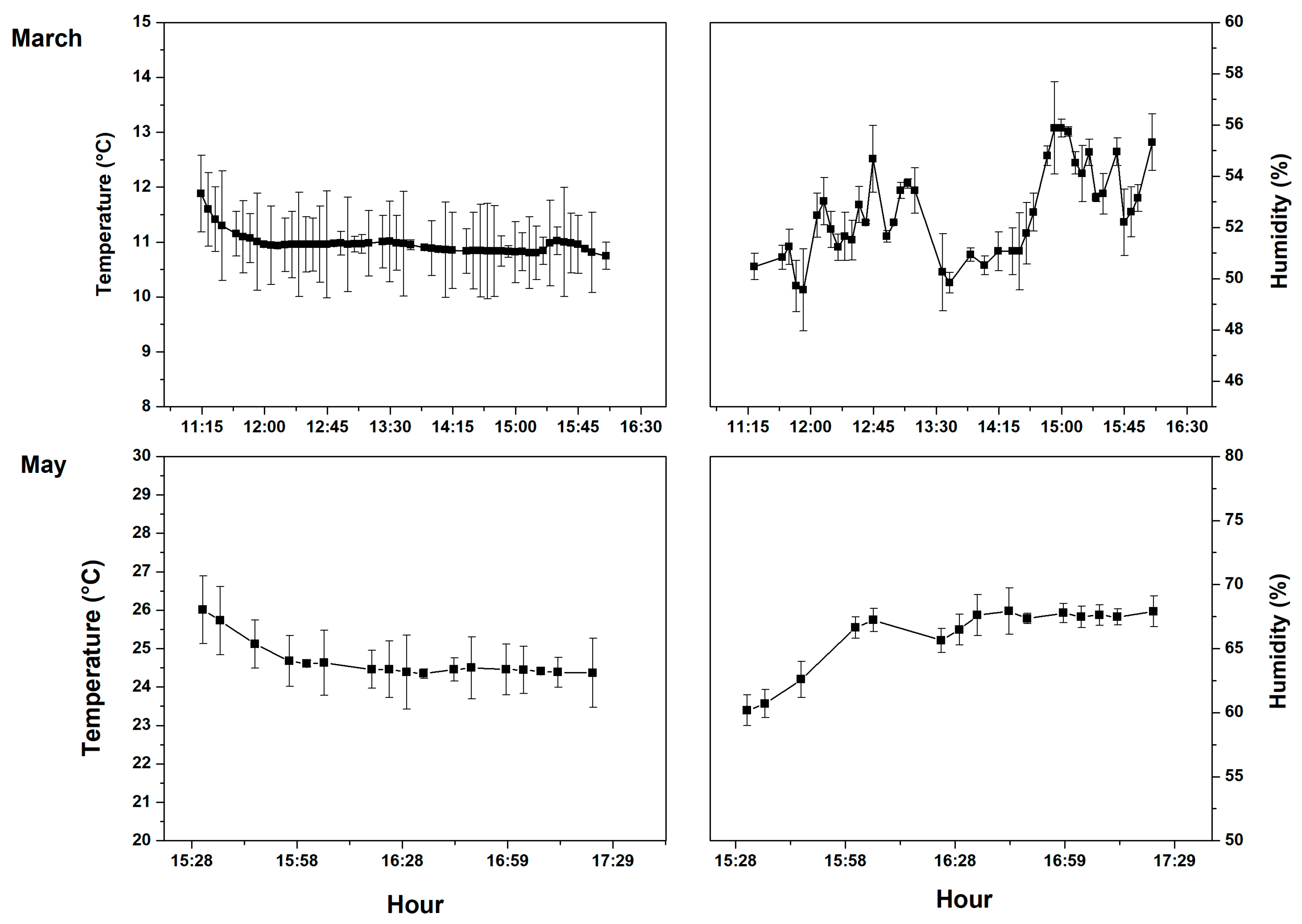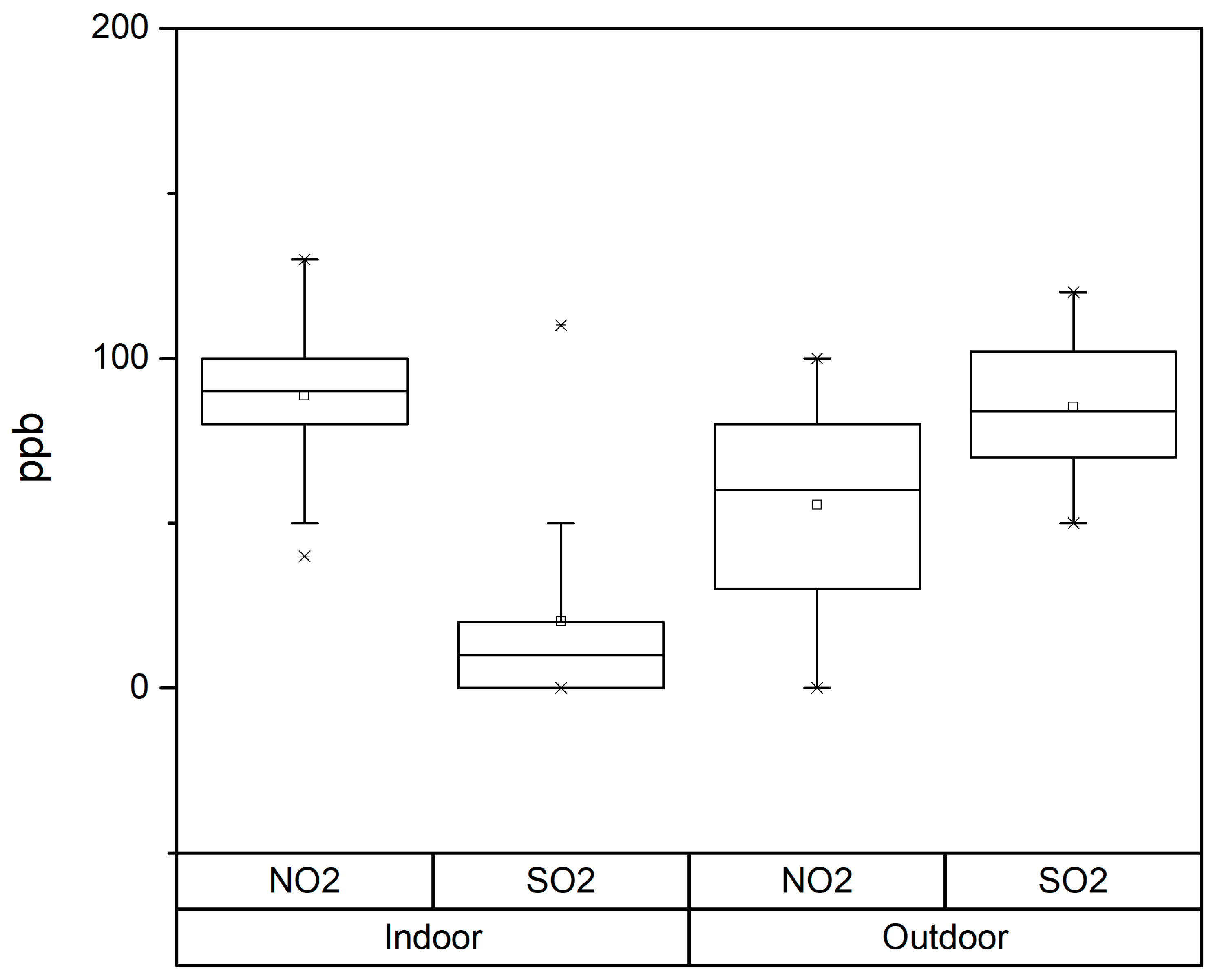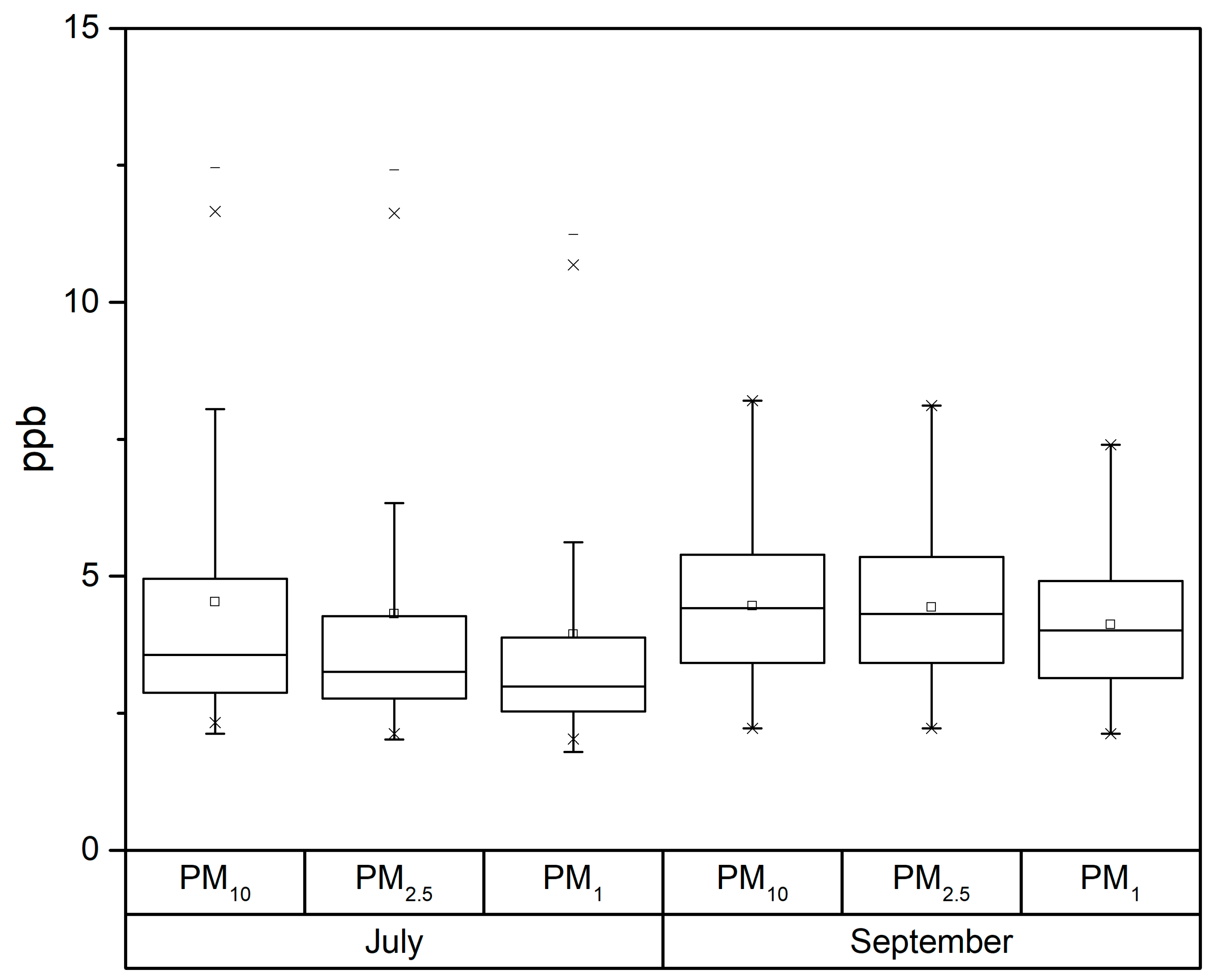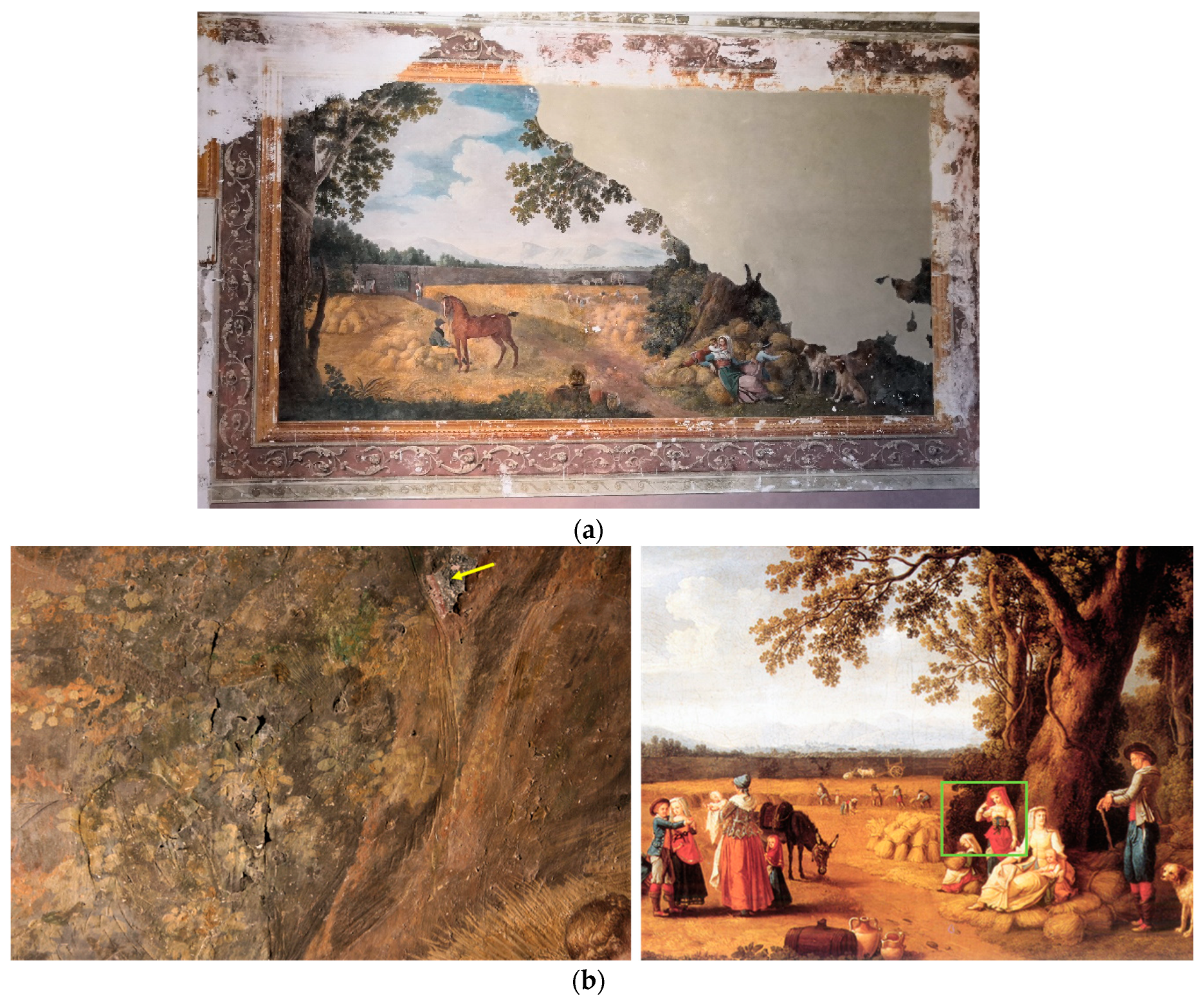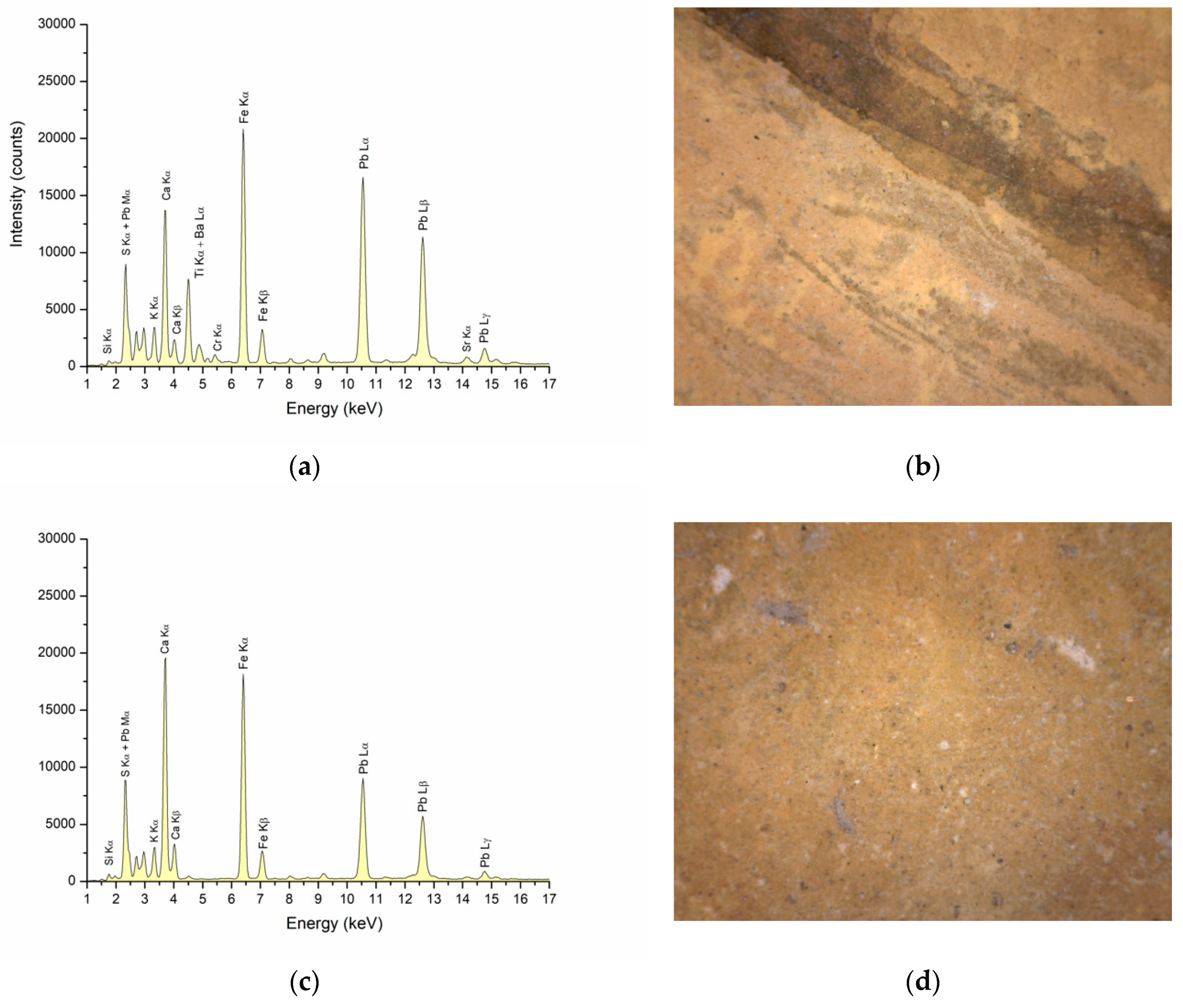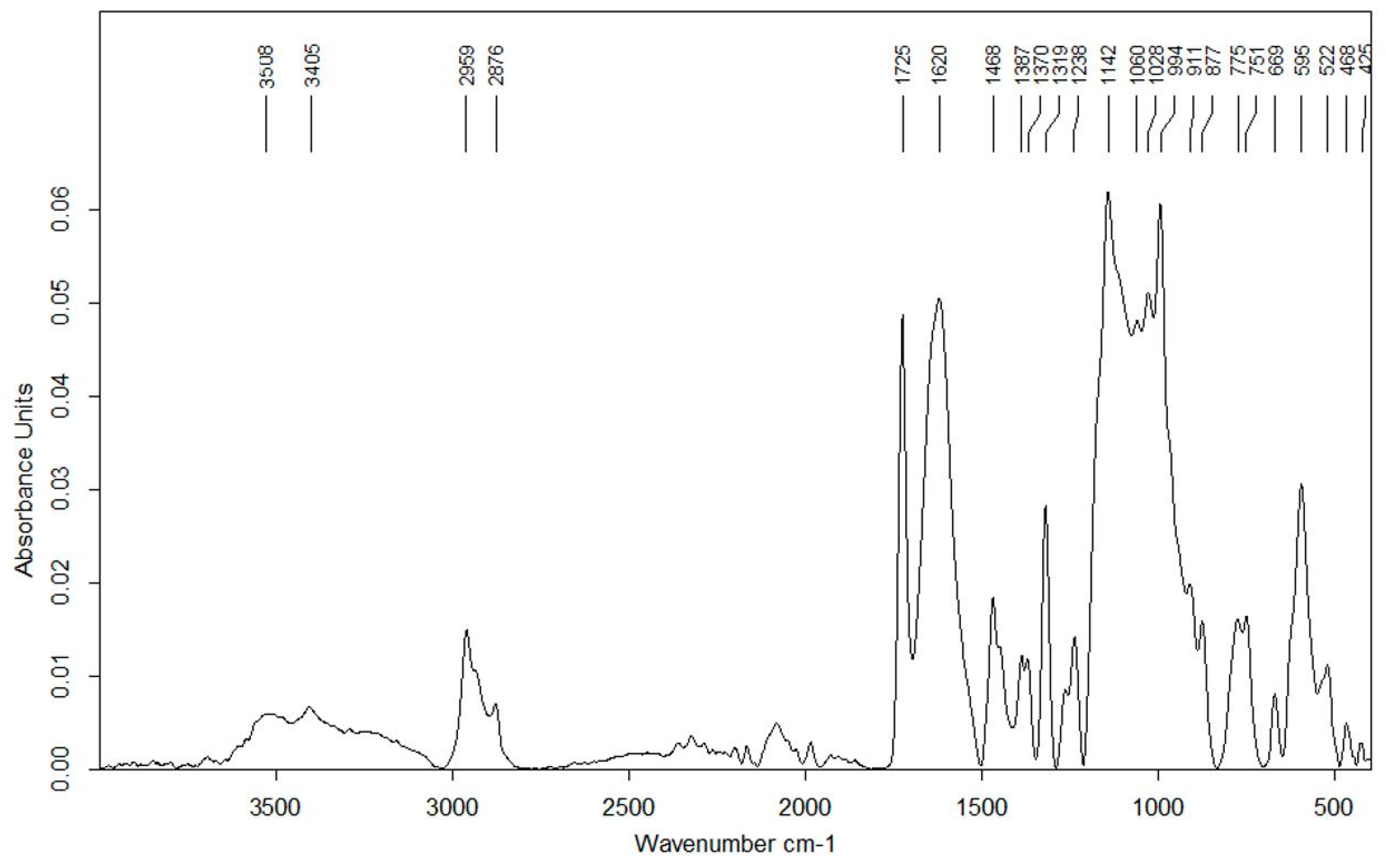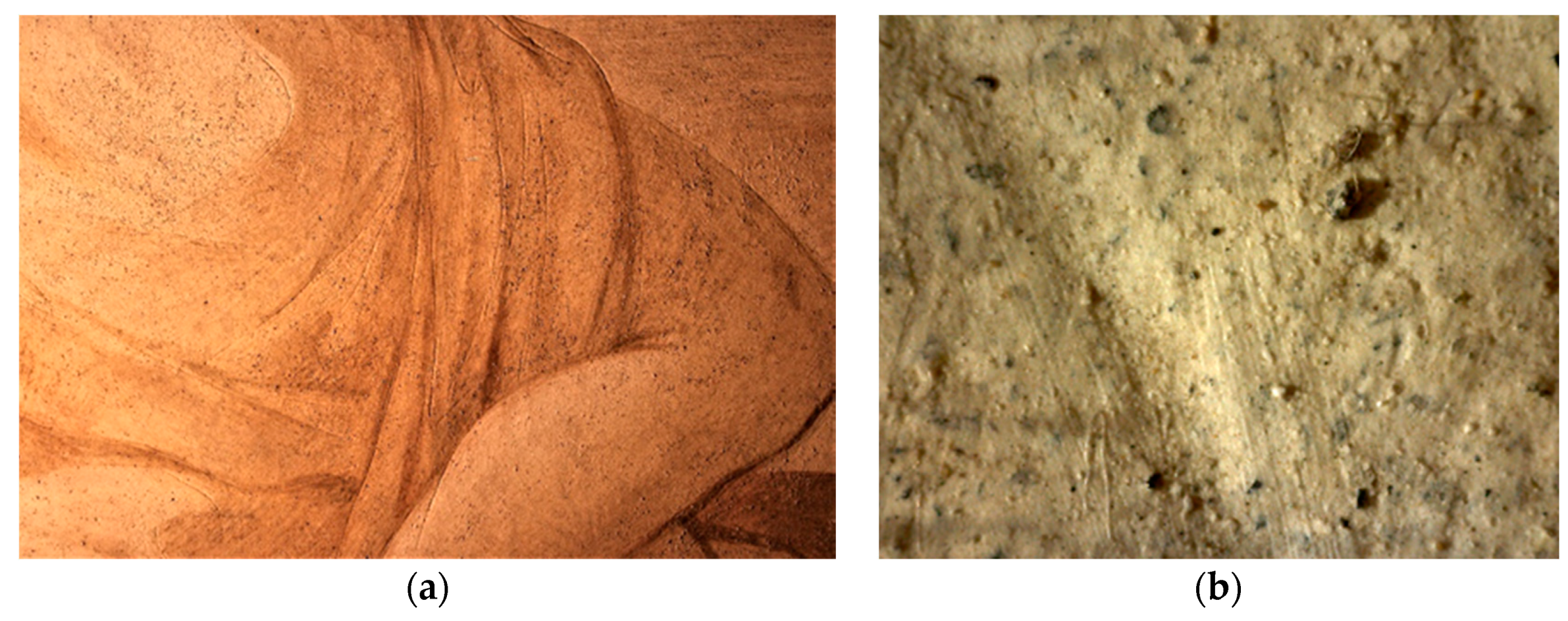1. Introduction
The Royal Site of Carditello is a palace once belonging to the Neapolitan Bourbon Monarchy and its surrounding grounds in San Tammaro, a small town in the province of Caserta in the Campania region. It was part of a group of 22 sites of the royal dynasty aimed at recreational (i.e., hunting) and productive activities of the Royal Family and its court, such as the farms of the Fagianeria di Caiazzo, the production of silk in San Leucio, fishing at Fusaro, and an agricultural and pastoral production center for the selection of royal horses at Carditello.
The Real Site of Carditello originated in 1744 as a new horse farm on the bottom of the Count of Acerra, named after the thistle plants present in large quantities in the countryside involved in the construction of the site. Later, in 1787, Ferdinand IV entrusted Francesco Collecini (1724–1804), a brilliant pupil of Luigi Vanvitelli (1700–1773), for the building of this site. [
1].
The planning of the decorations and the furnishings of the royal apartment was directed by the German painter Jacob Philipp Hackert (1737–1807), already known for his work at the Royal Palace of Caserta. He designed a kind of
tableaux vivants for the murals of the King’s bedroom representing “the Real Family”, dressed of the popular clothes of Terra di Lavoro executed by Giuseppe Cammarano on the basis of sketches by Hackert now preserved in Naples [
2].
The Chapel of the Ascension entrusted to Angelo and Carlo Brunelli is also rich in decorations. The latter paints, in monochrome, depict the Eternal Father between Angels and Seraphim. In the four corners, the allegorical figures of Eternity, Justice, Wisdom, and Mercy are depicted, while on the side walls, the Birth and the Flight into Egypt are shown.
Unfortunately, the Carditello site suffered numerous affronts, starting in 1799, when the court had to move to Sicily, taking with it the movable property. In 1860, the Carditello palace was occupied by the Garibaldini, and after the Unification of Italy, it passed to the Royal House of the Savoy. In 1920, the property was sold to the Opera Nazionale Combattenti, while the paintings and furnishings still onsite were transported to the other royal residences. Thanks to the rich documentation preserved in the Archive of the Royal Palace of Caserta, it was possible to document what remained in the Royal Site or was transferred over time, such as the rich picture gallery, the tapestries, the drawing, and the furnishings.
From that moment, the decline began, due both to the dispersion of proprieties and to the neglect of the management of the Royal Casino and the annexes occupied by the Americans during the Second World War. That increased the state of degradation of the place. Many years of disuse led to significant degradation, especially of its frescoed interior. In 1948, with the transfer of ownership to the Land Reclamation Consortium of the Lower Volturno, the Real Site was affected by a restoration attempt, which was unfortunately stopped due to the economic difficulties of the Institution.
Over the years, the monumental complex has gone through alternate events. In 2004, the monumental building and the surrounding landscape area were subjected to protection.
Then, the rapid process of revaluation began thanks to the civic movements and to The Ministry of Heritage and Cultural Activities, which acquired the palace in January 2014 and established the Real Site of Carditello Foundation in February 2017.
The foundation consists of the MIBAC, the Campania Region, and the Municipality of San Tammaro with the aim of promoting the knowledge, protection, conservation, and enhancement of the site.
In this context, for supporting the scientific and cultural activities aimed toward conservation of the wide heritage here preserved and severely damaged, the Foundation participated in the project “Innovative methods and technologies for the conservation, valorisation and use of cultural heritage: environmental and archaeological analyses”, within the CULTURA CREA-MIBAC program.
In particular, regarding the Carditello site, the project included environmental monitoring, and then the evaluation of conservation state of the Palace and the precious internal decorations (mural paintings and bas-relief stuccos). The collection of data on air quality is remarkably important in this case considering the context in which it is located, sadly known as “Land of Fires”.
Environmental monitoring was performed both outdoor (to assess the effects of atmospheric pollution and changes in the climate of the structure) and indoor the rooms of the site (to evaluate the conditions of conservation and fruition of the artworks). The parameters: Temperature, Humidity, NO2, SO2, and Brightness (indoor room); Temperature, Humidity, NO2, SO2, O3, PM, Rainfall, Anemometry, and Visible and Ultraviolet Radiation (outdoor) have been monitored and reported in a web platform.
From a material point of view, the most dangerous polluting atmospheric gases are SOx, NOx, and atmospheric particulates [
3]. In particular conditions, these pollutants can lead to the formation of aggressive acids (sulphuric and nitric), which are harmful to stone materials with a carbonate composition (marble, limestone, plaster) [
4]. The presence of carbonaceous fine dust is the cause of the blackening of surfaces exposed to the action of exogenous agents. These particles, combined with soluble salts (gypsum and nitrates), contribute to the formation of black crust on monuments.
Among physical agents, variations in temperature and humidity cause degrading stress in almost all materials, especially when these changes in environmental conditions occur extremely quickly.
Inside the structures, on the other hand, variations in thermo-hygrometric conditions and the frequency of such variations can generate physical alterations such as swelling, deformation, subsidence, breakage, and, in general, changes in the structure or shape of the constituent material; changes in flexibility and mechanical resistance; loss of adhesion; opacification of transparent films; solubilization, migration, and recrystallization of salts, etc. Many chemical reactions are also influenced or catalyzed by the presence of humidity, such as those due to acidic polluting gases in the atmosphere, hydrolysis reactions, oxidation-reduction and exchange reactions, etc.
Moreover, both temperature and humidity play a decisive role in the development of molds, bacteria, and microorganisms in general (biodeteriogens agents).
Simultaneously, non-destructive investigations were carried out to identify constituent, restoration and/or degradation materials on the mural paintings and to assess their conservation state under the current environmental conditions detected during the monitoring phase.
This integrated approach aims to highlight the connection between the environmental conditions and the effects of these on the degradation dynamics of the decorative apparatus (mural painting, stuccos, etc.) that still embellish the palace. In this way, it is possible to maximize the knowledge and to provide guidelines for future restoration work, starting from a complete report of current conservation state and a correct diachronic reading of changes attributable to vandalism and degradation phenomena that involved the mural paintings over two centuries. Finally, all the scientific data acquired could be useful both for the above specialist conservative purpose and for the innovative approach on the visit of the site involving a more generic target.
2. Materials and Methods
Environmental monitoring is an essential tool for determining the impact of natural and artificial factors that act synergistically on cultural heritage conservation [
5,
6]. Each material responds differently to the values assumed by environmental variables and their changes over time [
7,
8].
For the evaluation of the environmental conditions to which the Carditello site is currently exposed, an integrated environmental monitoring system has been installed. This in situ work station consists of a system of acquisition, processing, and transmission of data. Moreover, a series of probes for the measurement of the environmental parameters has been added.
In particular, two weather-environmental stations were used to carry out indoor and outdoor monitoring of the site.
Table 1 and
Table 2 show the characteristics of the two employed stations.
The stations have an IP66 protection and datalogger equipped with the following communication interfaces: GPRS, LAN, MODBUS RTU (RS485).
Measurements have been carried out with an interval of about 5 minutes and sent in rea- time to the server for data management and storage.
In detail, the system consists of:
- -
Data acquisition sensors: Measure useful parameters for monitoring air quality and are physically assembled to the central unit.
- -
Central unit: Acquires the parameters concerned and sends them, via an internal GPRS modem, at programmed intervals and/or by event to the service center. Access to the data stored in the local unit can also be gained via direct connection via SD card slot and/or USB port.
- -
Service Center: Resides in a professional server farm and makes data accessible anytime, anywhere.
The analyses of the mural paintings that decorate the noble floor of the Real Site of Carditello was carried out by IR thermography, infrared reflectography, UV fluorescence, and X-ray Fluorescence (XRF) analyses addressed to the identification and mapping of the different constituting materials (original and restoration pigments), to the execution technique, and to the evaluation of persistent degradations or due to previous conservative events.
The IR thermographic investigation was carried out using a thermal imaging camera (FLIR model B335), which uses a 320 × 240 resolution pixel uncooled microbolometric thermal sensor (thermal range from −20 °C to +120 °C, detected temperature accuracy +/−2%, spectral range 7.5 ÷ 13 μm, spatial resolution 1.36 mrad, field embraced 25° × 19°) [
9]. The thermal imaging camera is also equipped with a 3.1 Mpixel photo sensor that allows the acquisition of the thermal image simultaneously with the visible one under the same shooting conditions. In order to provide an appropriate temperature gradient to the areas to be investigated, the painted surfaces were subjected to thermal radiation using halogen red bulb lamps with a color temperature of 3200 K, 800 W/h placed in front of the sample area (distance of 1.5 m). The thermographic acquisitions were carried out in a total of about 20 min from the beginning of the heating.
The multispectral imaging acquisition were carried out using a digital CCD cooled scientific camera (CHROMA C4 - DSP series, model C250ME by DTA srl) with a KAF8300ME sensor, equipped with an internal wheel containing interference filters (350, 450, 540, 600, 800, 1000 nm bands filter, 50 nm bandwidth). The digital scientific camera use: a Cooled CCD, 6 Mpixel (3326 × 2504 points) effective (pixels with side of 5.4 µm); Full Well Capacity: 25.5 ke-; Dark Current: 3.5 e- pixelsec (at −5 °C); Quantum Efficency at 450, 550, 650 nm: 45, 57, 48; Fill Factor: 100%; Peltier cooling with ΔT = 30°.
The XRF analyses were performed on 23 selected areas, in the pictorial layers original or affected by previous restorations, using a portable spectrometer consisting of a miniature X-ray tube system, which includes the Mini-X Amptek X-ray tube (max voltage of 40 kV, max current of 0.2 mA, target Rh, collimator 1 or 2 mm), the power supply, the control electronics, and the USB communication for remote control; a Silicon Drift Detector (X-123SDD by Amptek) with a 125 to 140 eV FWHM @ 5.9 keV Mn Kα line Energy Resolution (depends on peaking time and temperature); 1 keV to 40 keV Detection range of energy; max rate of counts to 5.6 × 10
5 cps; software for acquiring and processing the XRF spectra [
10]. Primary beam and detector axis form an angle of 0 and 40 degrees, respectively, with the perpendicular to the sample surface. Measurement parameters were as follows: Tube voltage 35 kV; current 80 μA, acquisition time 60 s; no filter was applied between the X-ray tube and the sample; distance between sample and detector around 1 cm. The setup parameters were selected to have a good spectral signal and to optimize the signal to noise ratio (SNR). The Fourier Transform Infrared Spectroscopy (FTIR) analyses was carried out to identify the altered protective layer localized on pictorial surfaces have been acquired by means of a Bruker Optics Alpha-R portable spectrometer. The spectra were collected in a spectral range between 4000 and 400 cm
−1, with a resolution of 4 cm
−1 and 128 scans for each run (up to 2 min). Bruker Opus 7.2 software was used for data acquisition and processing.
All the analyzed pictorial layers were preliminary observed using a digital optical microscopy and raking light photography in order to document the surface morphology and the overlaps between originals and restorations pictorial areas.
For the purposes of the project, three areas were selected on the royal apartments and the church:
Area 1, bedroom: Mural paintings depicting the allegory of the seasons, in particular, some details of the “Reaping time”;
Area 2, Library Room (also known as the Rural Scene Room): Detail of the paintings and a lower part of the vault;
Area 3, Chapel of the Ascension: Bas-relief decorative elements and monochrome mural painting depicting the “Flight into Egypt”.
3. Results and Discussion
3.1. Indoor and Outdoor Monitoring
In
Figure 1, the behavior of the indoor thermo-hygrometric parameters of March and May 2018 was measured in the central room on the first floor where different mural painting are present, and non-invasive measurements have been performed.
The results are correlated with the building typology, the orientation, and position of monitored rooms, as well as with the fact that the Carditello Real Site has a reasonable thermal inertia with an almost constant behavior of the internal thermo-hygrometric variables, compared to the outdoor thermo-hygrometric variations recorded in the same periods.
Figure 2 shows the box charts of the cumulative indoor and outdoor NO
2 and SO
2 values of the monitoring periods.
The indoor detected NO2 and SO2 values shown a low variability with 90 ppb and 20 ppb average value, respectively. Outdoor nitrogen dioxide values also shown low variability and an average of around 50 ppb, while outdoor Sulphur dioxide values show a higher average than indoors (about 85 ppb). Finally, the ozone average value has been equal to 70 ppb during the two monitoring periods.
Figure 3 shows the PM values monitored during the sampling period. The average particulate values are about 5 ppb, with almost no difference between the months considered (July and September).
All environmental parameters, with the exception of PM, exceed the thresholds recommended by Ministerial Decree No. 10 of 2001 on air quality for museums (
Table 3). Although the Carditello Real Site is not a confined environment like museums, it was decided to take these thresholds as a reference and to assess the permanence times of these average values in the long term. Therefore, a new environmental monitoring campaign has been planned in the next year.
3.2. Non-Destructive Investigation on the Mural Paintings
In the Area 1, the bedroom of the King, among the mural paintings depicting the allegory of the seasons, “The Reaping” has been selected for non-destructive in situ investigation (
Figure 4a).
Historical information and results provided by the scientific analyses have led to discriminate the different phases of original execution and remakes, underlying the extensive inhomogeneity in the pictorial surfaces. This mural painting, indeed, is characterized today by wide falls, detachments, and overlaps.
The preliminary photographic documentation in raking light has shown morphological inhomogeneities referable to the damages of the wall paintings during the first revolutionary events in the years immediately after the construction of the site.
For example, it is probable that the compositional structure also provided for the group of two female figures (girls next to the queen), coinciding with the sketch by P. J. Hackert removed up to the preparation layer and subsequently replaced by vegetation (
Figure 4b). The raking light highlights the cut along the outline of the two figures and the abrasions on the plaster to remove the pictorial layers.
The IR thermography imaging allowed the confirmation of these hypotheses and documented the anomalies associated with repainted surfaces that result as warmer areas (
Figure 5), due to detachments or materials discontinuity between the surface and the underlying layers (unlike the original areas, they appear more homogeneous and propagate heat inside the wall).
The multispectral investigations in the visible (450, 540, and 600 nm) and in the infrared (750 and 1000 nm) range, thanks to the different spectral response of the materials constituting the pictorial layers, also localized the smaller areas of integration pictorial, which differentiated them from the surrounding original layers and made them indistinguishable to the naked eye. No evidence of underdrawings has been detected: The analyzed paintings, in general, were not transparent to infrared radiation, so it was not possible to verify the presence of underdrawings.
XRF analyses verified the different chemical composition of the original pictorial surface and subsequent restoration, confirming the mapping provided by imaging techniques. Moreover, through the identification of the pigments in mixtures, it was possible to distinguish the pictorial palette of the restorations carried out during the 19th century (after the 1799 Revolution and after the Garibaldini occupation) from that attributable to more recent restorations, subsequent to the first decades of the 20th century, not documented in the bibliography available to date consulted.
Figure 6 shows the map of the selected XRF spot analyses and
Table 4 summarizes the elemental chemical composition relative to the pictorial mixtures in the all investigated original or restoration areas.
The original palette, used by the painter G. Cammarano, helped by G. Tischbein (1751–1829) for the disposition of the figures and by the same J. P. Hackert for the execution of the landscape and animals, consists of: Lead white [(PbCO3)2·Pb(OH)2], iron oxides based pigments (red and yellow ochres and earth), cinnabar (HgS), and a mixture of Naples yellow (lead antimonate) and for green layers.
The first documented restoration was in 1806 and executed by the same painter, G. Cammarano. On the contrary, in subsequent restorations, certain dates are not documented. The chemical analyses show that, compared to the original, the 19th century retouches, remakes, or repainting are characterized by the presence of barium, while 20th century ones are charactizered by the presence of barium and titanium. Barium white (BaSO
4) was commercially available in the early 19th century and, due to its low cost and poor covering power, was added as a charge in the production of pigments. Titanium white (TiO
2) was commercially available in anatase-form from the second decade of the 20th century and in the rutile-form after the Second World War [
11]. The two different mineralogical phases of the synthetic white pigment are not distinguishable by means XRF measurements, but clearly identifiable thanks to Raman spectrometry, which unfortunately could not be performed at this stage of the project. Nevertheless, the presence of titanium white in the analyzed pictorial mixtures represents a
post quem term for the preliminary relative dating of the most recent restoration interventions for the wall decorations of the Royal Palace of Carditello.
Also, for the yellow layers, it was possible to verify a difference of pigments used between the original and of restoration: For the former, it was found that yellow ochre was used, while for the restoration surfaces, chrome yellow (CrPbO
4) was used, a synthetic pigment in use since the early 19th century, present in the analyzed area in mixture or overlapped with barium white and titanium white (
Figure 7).
The preliminary diagnostic investigations and the macroscopic evidence of a chromatic alteration have suggested, on several pictorial surfaces in Area 1 and 2, the presence of an aged synthetic protective, referable to restorations conducted in the 20th century. This protective analysis was characterized by IR spectroscopy (FT-IR).
The spectrum, shown in
Figure 8, consists of typical absorption bands of an acrylic resin, probably associated with Paraloid B67, visible at 2959, 2877 (C-H stretching), 1725 (C = O stretching), 1469, 1450, 1388, 1370 (C-H
3 and O-CH
2/3 deformation of the methyl and ethyl esters), 1264, 1238 (CH deformation), 1143 (C-O stretching of the esters), 1025 (deformation C-H), 994, 911, and 877 cm
−1. Bands at lower frequencies (<800 cm
−1) were not considered to be very informative.
The FT-IR spectrum also revealed the sulphate absorption bands, probably associated to alteration products, clearly identifiable as 3508 (ν3 H2O vibration), 3405 (ν1 H2O vibration), and 1621 cm−1 (H2O bending vibration). The other sulphate bands at approximately 1115 (ν3 (SO4) 2- stretching vibration), 670, and 600 cm−1 (ν4 (SO4) 2- bending vibrations) tend, instead, to overlap the protective bands.
The pictorial surfaces as the Rural Scenes Room (Area 2) appear to be affected by detachments and fractures and previous inhomogeneous restoration works on the wall paintings are evident. The decoration of the vault is incomplete, probably due to previous infiltrations of water from the rooves. On the selected pictorial surface, the infrared reflectography investigation more clearly revealed the pencil drawing (or carbon material, in general) of some details of the representation (buildings and characters) and the repainting areas performed during past restoration works carried out during the 19th century, following the historical events that caused several damages. In fact, in correspondence of some lacunae or along the edge of fractures, the overlapping of pictorial multilayers separated by preparation layers has been observed, which leads us to suppose the existence of reconstructions following the first nucleus carried out under the direction of Hackert during the years of construction of the Real Site. Also, for the painting decoration of this room, thanks to the different spectral behavior in the infrared of the pictorial materials, it was possible to map the restoration surfaces. In fact, the restoration areas, which in the visible painting are not easily discriminated with the naked eye, appear to have a different shade of grey than the surrounding original area in images acquired with a 1000-nm filter. The transparency of some materials to the IR has also allowed us to observe the compositive succession of the painted subject. Finally, the chemical analysis using portable XRF spectrometer gave indications on the original pigments and also verified the presence of pigments available from the beginning of the 19th century (such as barium white and chromium-based pigments).
Finally, the Chapel of the Ascension decoration was investigated. Regarding the bas-relief elements, the processes of degradation of the constituent materials, probably related both to the particular construction technique and to the environmental thermo-hygrometric conditions, have determined numerous falls, detachments, and fractures of the stucco floral decorative elements. In correspondence of the falls, it is possible to verify the presence of iron elements affected by an advanced state of corrosion that has caused fractures and consequent loss of material due to the increase in volume. The survey, carried out by means of a cover meter in some of the intact floral decorations, not affected either by fractures or by falls, verified the presence of internal metallic elements for anchoring the stuccos to the wall surface. This evidence suggests that the particular executive technique used for the relief decorations of the chapel, in suboptimal conservative conditions, can itself cause the deterioration of the stuccoes due to the swelling due to corrosion of the internal iron pins. On the mural monochrome painting depicting the “Flight into Egypt”, a preliminary study was carried out by XRF analysis both on light and brown layers, verifying the use of pigments based on iron oxides (brown ochre or earth) for the different brown shades with which the monochrome was executed. Thanks to the observation in raking light, the pictorial surface shows a detailed compositional drawing, coinciding with the final subjects executed in the pictorial drawing up. The evidence, documented by optical microscope and raking light, suggests the use of a punch to fix the drawing from the paper to the still-fresh plaster (
Figure 9).
4. Conclusions
The results obtained from the first environmental monitoring campaign at the Royal Site of Carditello provided parameter values within the regulatory thresholds, even if the area in which the historical site is located has undergone significant anthropic impacts over time. The non-destructive in situ investigations allowed to identify the original and restoration pigment palette, to study the execution technique, and to evaluate previous or persistent degradations causes.
In detail, chemical markers allowed us to date (in an indirect way) the restoration works carried out during the 19th and 20th centuries as a result of damage suffered during insurrections and war events. The multispectral imaging techniques localized the retouching or remake and detachments areas on the analyzed painted surfaces, providing a useful support for future consolidation and conservative works. In particular, the use of active IR thermography for mapping the detachment from the wall support and/or preparatory layer of plaster turned out to be a very effective method, so as to guide the future operations of securing and consolidating the pictorial surfaces in a targeted manner. In some cases, the areas of greatest detachment coincide with the areas of pictorial remakes carried out with materials and/or stratigraphic sequences different from the original surfaces.
The indoor microclimatic monitoring (including T°C, UR%, air quality data collection, and water infiltration mapping) could be extended to a minimum of six months in order to establish the correct strategies to establish the optimal conditions of conservation and the durability of future conservation and restoration interventions of the valuable decorations.
Finally, the whole set of information obtained could also prove to be very useful and effective for the purposes of knowledge and enhancement of the site, allowing an innovative visit approach aimed at reconstructing the historical events and the changes suffered from mural paintings over time. Indeed, all information has been acquired by the guides who, during the visits, illustrate the scientific results confirming the historical retrace of the site still readable on the mural paintings to visitors.
